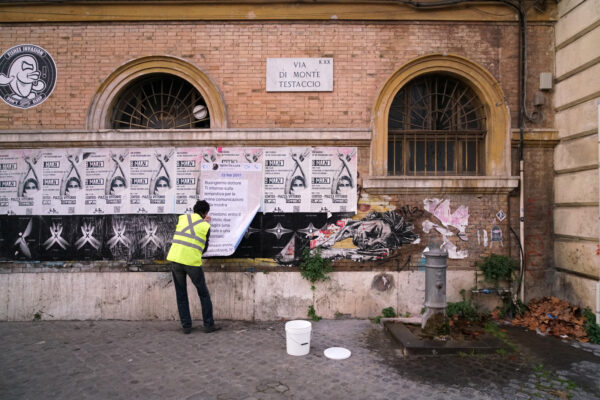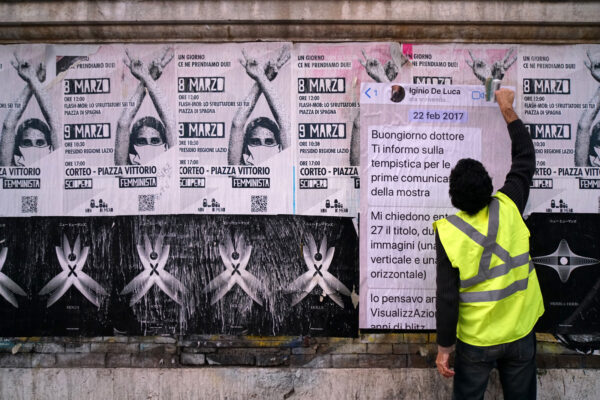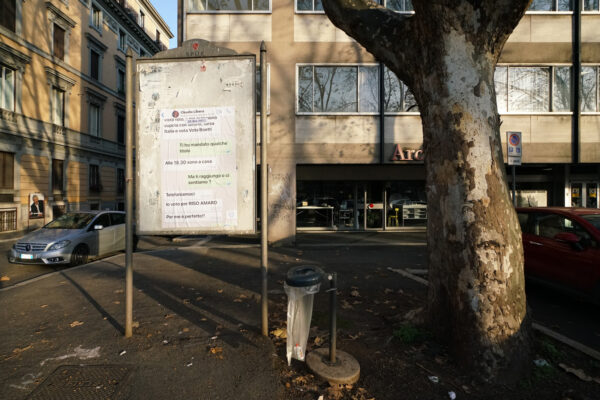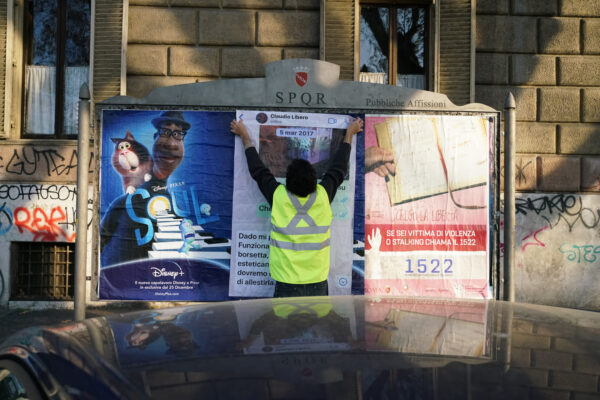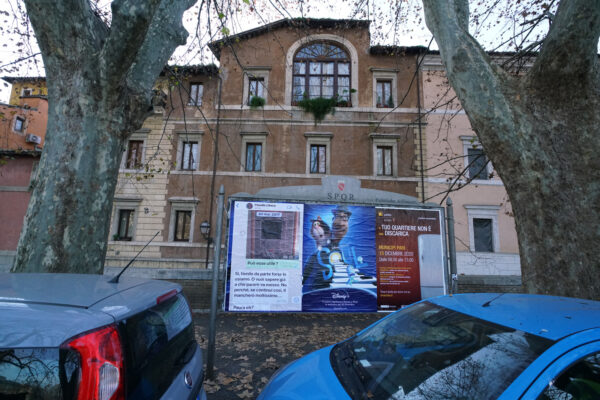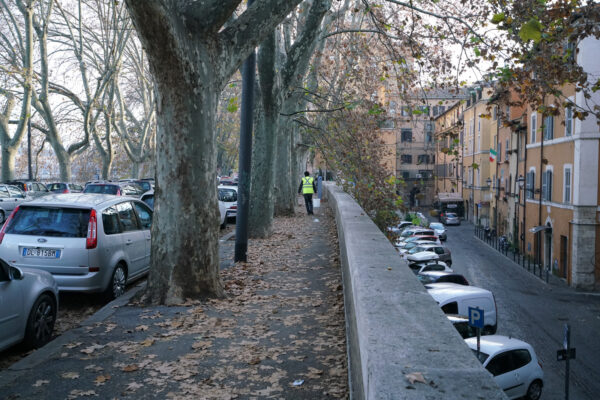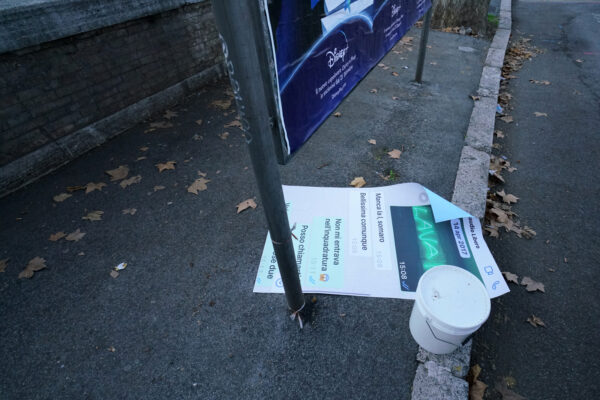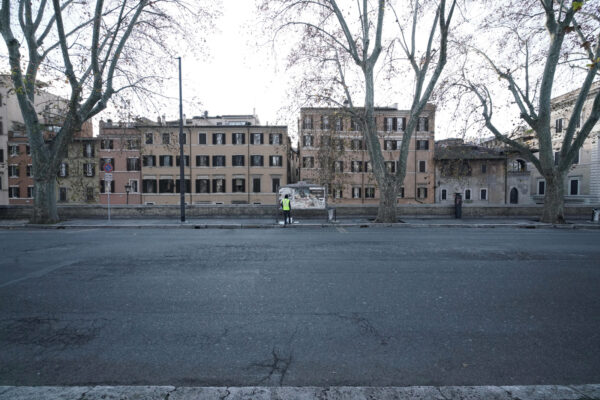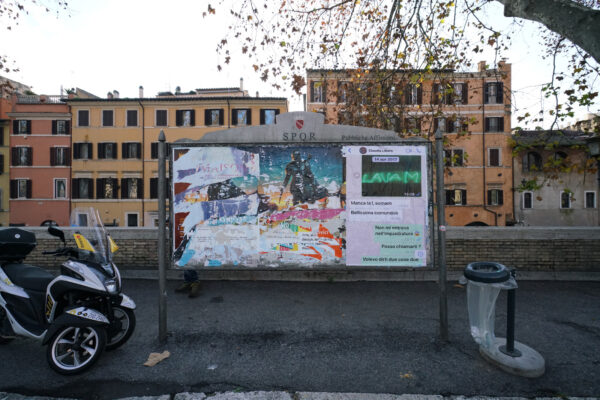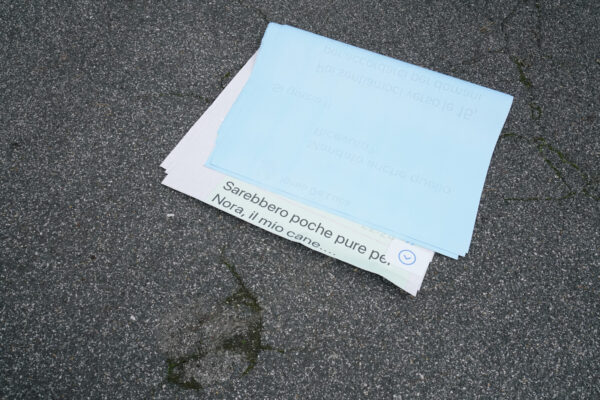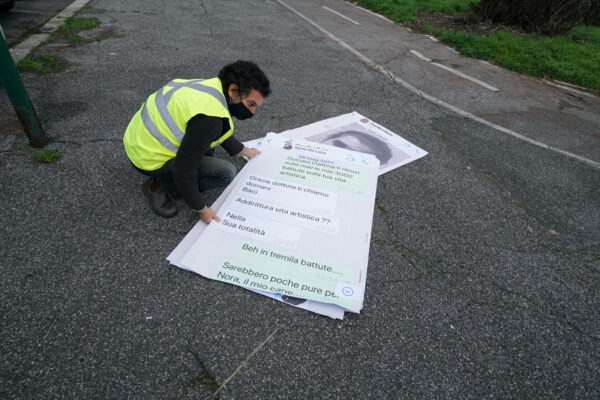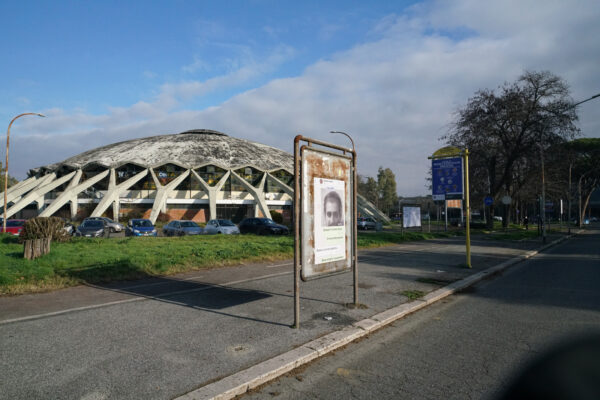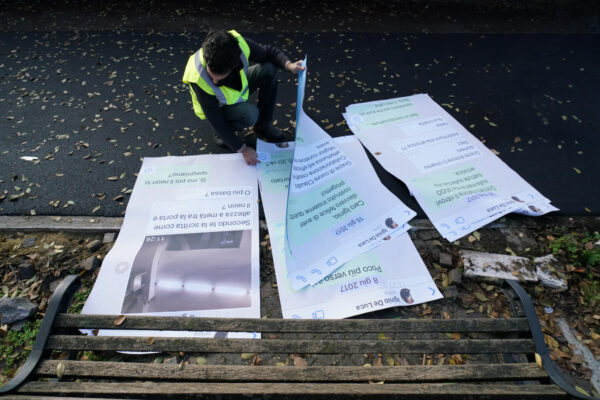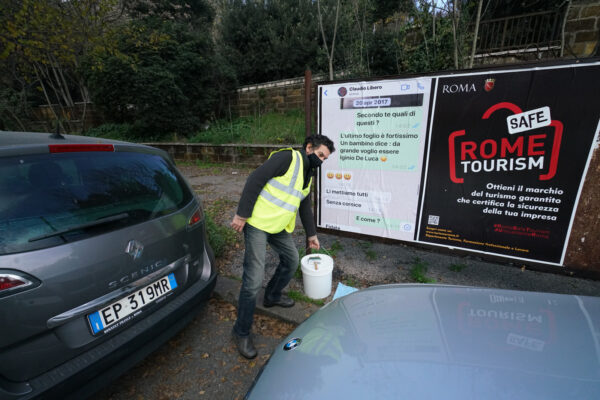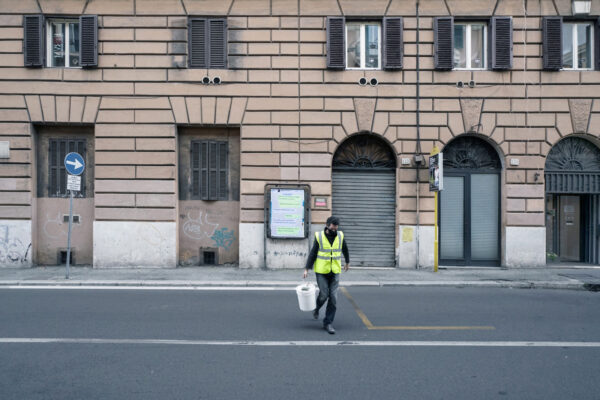scarica il pdf Sta scrivendo…
Sta scrivendo…, 2020
Azione urbana poetica
partecipata e condivisa da AlbumArte e Claudio Libero Pisano
Roma, 22 dicembre 2020, dall’alba al tramonto
“Raccontarsi è un esercizio complicato, prevede il mettere a nudo parti di sé spesso private o poco attinenti la dimensione pubblica.
Tempo fa Iginio mi ha proposto un suo lavoro che prevedeva la mia partecipazione diretta alla realizzazione. Si trattava di rendere pubbliche delle conversazioni. Uno scambio professionale e amicale intorno alla preparazione di una sua mostra che facemmo anni fa negli spazi di AlbumArte, a Roma. Così come erano, senza alcun editing.
Tutto era avvenuto su una chat telefonica, con errori, refusi e quant’altro. Ho riletto mesi di scambi, impressioni e valutazioni sul suo lavoro. Mezze parole, magari due righe per motivare un rifiuto o un assenso reciproco. Mi sono domandato a chi potessero interessare quella valanga di messaggi, spesso sgangherati, in un italiano più parlato che scritto, come usa oggi nella messaggistica. Non riuscivo a vederci niente che avesse un potenziale narrativo nello scorrere di quei messaggi.
Non mi piaceva, non mi sentivo a mio agio nel pubblicare conversazioni che pur professionali restavano nell’ambito di un percorso privato. Sarebbe stato come consegnare la brutta copia di un tema che si voleva invece redigere al meglio.
Ho capito nelle discussioni con Iginio che in realtà il suo obiettivo era centrare l’attenzione proprio sul brogliaccio, sulla brutta copia che precede la realizzazione di un progetto artistico. Raccontare come si arriva a una mostra e far vedere, senza aggiustamenti successivi, come si cresce reciprocamente nella realizzazione di un’opera
Lavoro con Iginio da anni, tra noi si è creata quella fiducia che ci consente di cominciare un progetto senza troppe certezze ma con la consapevolezza che lo porteremo a termine nel modo migliore. Quello che si legge in realtà tra le righe di quelle conversazioni non è più un linguaggio sincopato (e spesso sgradevole) al quale ormai siamo malamente abituati. É piuttosto la mappa che rivela da dove comincia tutto. Una volta sarebbero state lettere, poi delle mail. Ad oggi siamo alla messaggistica telefonica.
Ovviamente un progetto artistico non si limita a quello. Ma la scelta di Iginio di concentrarsi su questa fase ha il significato di mostrare anche le debolezze e gli errori. Ingrandisce il particolare di uno scarabocchio fatto mentre si è al telefono o uno schizzo sulla carta di una pizzeria romana, prima che arrivi la Margherita.
Si parla poco del rapporto tra curatore e artista, dei legami che servono ad arrivare a una mostra finita. Conoscere un artista è come accumulare scorte nel granaio in attesa che l’inverno arrivi. Acquisire informazioni, anche le più insignificanti, diventa un bene prezioso quando il curatore ha la responsabilità di esporre il lavoro. La relazione con lo spazio troverà suggerimenti anche grazie a quelle informazioni acquisite in momenti apparentemente trascurabili fatti di chiacchiere veloci, cene a casa o pause pranzo in giro per la città. Ogni cosa, anche minima, tornerà utile.
La banalità di una conversazione in chat diventa veicolo per provare a capire di cosa è fatto il rapporto tra un curatore e un artista. Chi sono e perché sono decisivi l’uno per l’altro.
Quei manifesti in giro per la città che mostrano frammenti di pensieri e parole rimettono finalmente l’artista e il curatore nel mondo degli imperfetti umani.
Umani, che lavorano, mangiano e pagano le utenze. Quello del mondo dell’arte è un universo sconosciuto ai più, fatto di grandi elogi ma di, quasi, nessuna politica reale di sostegno. In questo paese arte, spettacolo, intrattenimento sono un’unica parola. Quando se ne fa menzione si parla genericamente di musei, mai di chi questo mondo lo fa, lo costruisce passo per passo, ogni giorno. Sta scrivendo… scopre, senza filtri, quanto esiste dietro un progetto artistico.”
Claudio Libero Pisano
Sta scrivendo…, 2020
Poetic urban action
Participated and shared by AlbumArte and Claudio Libero Pisano
Rome, december 22, 2020, from sunrise to sunset
“Telling one’s story is a complicated exercise; it involves laying bare parts of oneself often private or loosely connected to the public dimension.
Some time ago, Iginio proposed a project that involved my direct participation in its realization. It was about making public our conversations, a professional and friendly exchange around the preparation of one of his exhibitions that we did years ago in the spaces of AlbumArte, in Rome. Just as they were, without any editing. Everything had happened on a phone chat, with errors, typos, and whatever else.
I revisited months of exchanges, impressions, and evaluations on his work. Half-words, perhaps two lines to explain a rejection or a mutual agreement. I wondered who might be interested in that avalanche of messages, often disjointed, in a more spoken than written Italian, as is common today in messaging. I couldn’t see anything with potential narrative in the flow of those messages. I didn’t like it; I didn’t feel comfortable publishing conversations that, even if professional, remained within the realm of a private journey. It would have been like handing in the rough draft of an essay that was meant to be polished to perfection. In discussions with Iginio, I understood that his actual goal was to focus attention on the draft, on the rough copy that precedes the realization of an artistic project. To tell how one arrives at an exhibition and to show, without subsequent adjustments, how mutual growth occurs in the creation of a work. I’ve been working with Iginio for years, and between us, a trust has been established that allows us to start a project without too many certainties but with the awareness that we will bring it to completion in the best way. What is actually read between the lines of those conversations is no longer a syncopated (and often unpleasant) language to which we are now poorly accustomed. It is more like the map that reveals where everything begins. Once they would have been letters, then emails. Today, we are at messaging.
Obviously, an artistic project is not limited to that. But Iginio’s choice to focus on this phase means showing weaknesses and mistakes as well. It enlarges the detail of a doodle made while on the phone or a sketch on paper in a Roman pizzeria before the Margherita arrives. Little is said about the relationship between curator and artist, about the ties needed to reach a finished exhibition. Knowing an artist is like accumulating supplies in the barn waiting for winter to come. Acquiring information, even the most insignificant, becomes a precious asset when the curator is responsible for exhibiting the work. The relationship with the space will find suggestions also thanks to that information acquired in seemingly negligible moments of quick chats, dinners at home, or lunch breaks around the city. Everything, even the smallest thing, will come in handy. The banality of a chat conversation becomes a vehicle to try to understand what the relationship between a curator and an artist is made of. Who they are and why they are crucial to each other.
Those posters around the city that show fragments of thoughts and words finally put the artist and the curator back in the world of imperfect humans. Humans who work, eat, and pay bills. The art world is unknown to most, made up of great praise but almost no real support policy. In this country, art, entertainment, and show business are one word. When mentioned, it is generally about museums, never about those who make this world, build it step by step, every day. He is writing… discovers, without filters, what exists behind an artistic project.”
Claudio Libero Pisano
